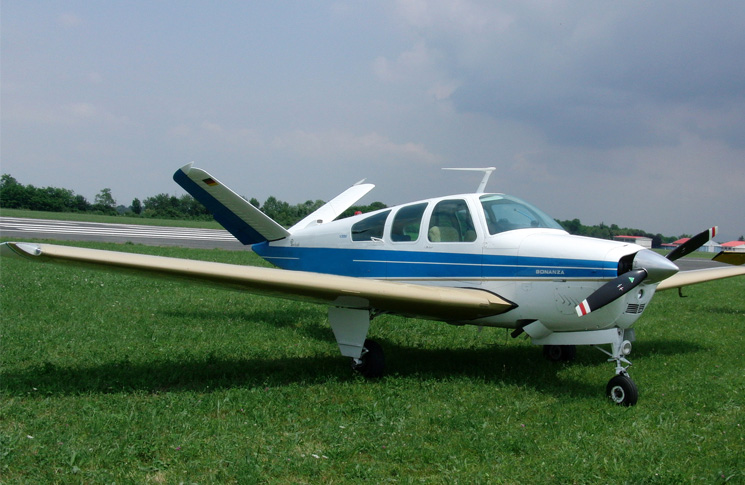Doug Hollstrom
It was a beautiful summer’s day in northern Michigan, in the US. It was 1979 and I had decided to go flying in my 1979 V35B Beechcraft Bonanza. The weather was ‘severe clear’ with seemingly infinite visibility and I didn’t want to miss such a perfect flying day.
After completing the pre-flight, I climbed into the cabin, adjusted the seat belt, locked the cabin door and when clear, started the engine. Without hesitation, the engine roared to life. The oil pressure was good, the radios on, transponder set to 1200 and I did a quick check of the wind sock. The taxi to 27 was uneventful. My mag check and engine instrument scan showed all in green. Flaps were set to neutral, trim tab to zero, flight controls free and correct: I was ready to roll.
Announcing my intentions, ‘Harbor Springs Unicom, Bonanza Triple Four Five Delta departing runway 27 VFR northbound,’ I turned onto the runway centring myself onto the mid-line stripe. A quick check of the wind sock and controls free and clear, fuel check good. I began my acceleration for take-off, rotating at 70 knots. Maybe five seconds later, as I was soaring over the trees at the end of the runway, the pilot seat slid straight backwards to its full aft position with a BANG and in so doing, jerked my hands off the yoke and my feet off the rudder pedals.
With the 300 horsepower Continental and high speed prop set to max take-off, my aircraft was climbing on a very acute angle. It was at this moment that I realised how critical my flight situation had become. I was on my back like an astronaut strapped tightly in my seat and unable to reach my flight controls, manifold pressure or prop control. As the climb angle continued to increase and my airspeed continued to decrease, I realised that I had to find a way to stop my plane from the stall that was seconds away.
I threw both feet up to the yoke and with all my strength kept the yoke as far forward as I could. So here I am, flying on my back with my feet on the yoke as the only control input that I could muster. I remember looking out the corner side glass and seeing the shore of Lake Michigan fast approaching and thinking, ‘I wonder if anyone will be able to figure out what happened to cause this accident’.
My parents were fatally injured in a Bonanza in 1967 when I was a senior in high school. A November winter storm with freezing rain brought their aircraft down at night. Most pilots can understand that situation. But what will they say about me? I had my father’s N-number on my brand new V35B. With 500 hours in type and the weather perfect … what will they say?
I had to push that conversation out of my mind. I knew that I had to get out of my seat and up to the flight controls. I undid my seatbelt. I knew that I would have only a couple of seconds to drop my feet off the yoke and crawl off my back, like doing a straight sit-up with the deck angle now probably 60 degrees. With all my strength, I pulled myself up against gravity as the plane soared up with its last gasp. I felt like the aircraft would just keep going right over in a loop. With extreme difficulty, I reached the yoke as my knees hit the floor of the cockpit. I pulled the throttle straight back to idle as I trimmed the elevator to neutral. So now I’m flying my aeroplane on my knees with the artificial horizon as my only guide to level flight. I added throttle and slowly trimmed the aircraft for level flight. Reaching back behind me, I slowly pulled the pilot’s seat back up into position. Unable to use my legs due to them shaking, I once again crawled into my seat. Checking to make sure the seat lock was engaged, I buckled back in. I probably flew around for an hour or so before I felt like I could safely land.
I truly hope that this story will encourage all pilots to make sure their seat is secure and locked into position before every take-off.



Comments are closed.